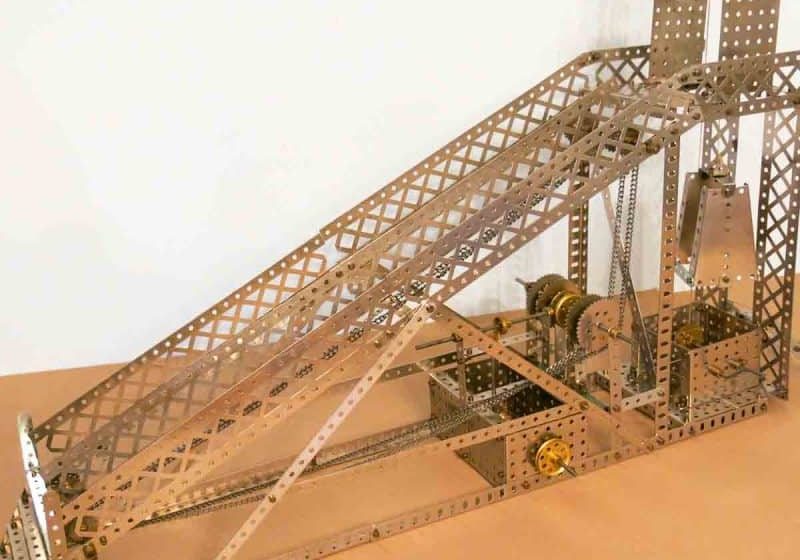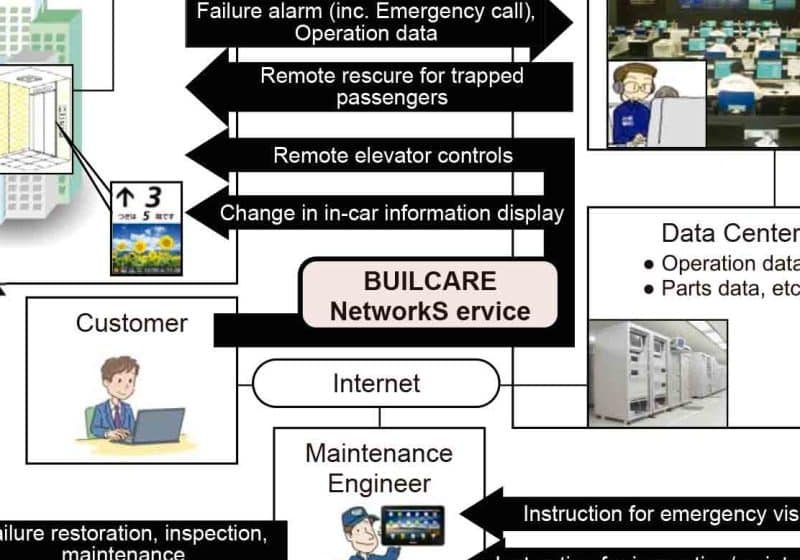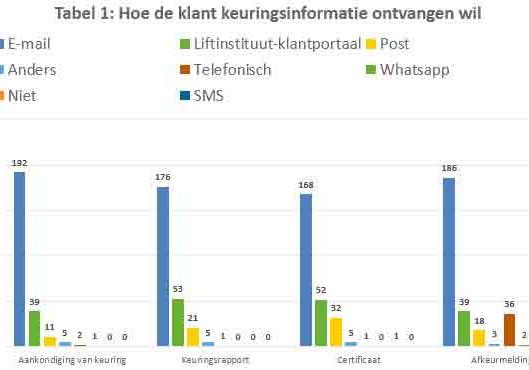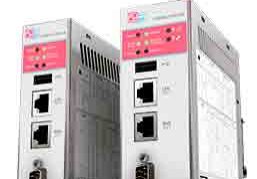Transitioning to New Maintenance Strategies With Remote Monitoring
Dec 1, 2017

Leveraging IoT in elevator maintenance
by Dan Bryant, Johannes Guntsch, Kyle Hendren and Christopher Pearce
Elevator downtime slows people and operations. Additionally, we find there is not enough information coming back about the current health of equipment in service. This creates daily inefficiencies for building owners and service providers. Increased operating costs and downtime affect building owners’ profitability, while service providers experience staffing inefficiencies and increased costs when reacting to urgent maintenance calls.
With recent advances in the cost and capabilities of sensors, data communication, storage and computing, a new class of intelligent products will change the economics and dynamics of the vertical-transportation (VT) industry. These products will be delivered in the form of hardware with embedded software, along with continuous services covering data acquisition, cloud data management and advanced analytics.
Maintenance Strategies
An Internet of Things (IoT) analytical monitoring solution allows building owners and service organizations to transition maintenance activities from outdated reactive and preventive maintenance strategies to proactive, condition-based and/or predictive/prescriptive maintenance strategies.
Maintenance activities have followed the same process since the Industrial Revolution. Companies purchase assets, and, after placing them into service, set up maintenance intervals based on cycles and repair, or replace when broken. Both approaches to maintenance can be accomplished without the use of technology. The VT industry is no exception. Currently, most VT maintenance service is either reactive or preventive.
Reactive/corrective maintenance is carried out following detection of a variance or failure and is aimed at restoring the machine to normal operating conditions and minimizing downtime. This approach is based on the belief that the costs sustained for downtime and repair are lower than the investment required for a maintenance program.
Preventive maintenance (PM) is triggered and driven by time or events. Maintenance tasks are carried out at predetermined intervals or according to prescribed criteria. This strategy aims to reduce the risk of failure or performance degradation of the equipment. Under this approach, relevant parts will be replaced or rebuilt on or before the expected failure. Since preventive maintenance requires qualified and experienced technicians who understand when equipment is not operating at optimum levels, preventive maintenance will not take into account actual operation of the machine, where, in some cases, parts can be replaced when there is no need, and unnecessary downtime occurs. Advancing beyond the first two levels is where IoT is making its impact.
In proactive maintenance, maintenance should be performed only when certain indicators show signs of decreasing performance or upcoming failure where sensors would create an alarm at each deviation. All equipment displaying abnormal values is refurbished or replaced. In this way, it is possible to extend useful life and generate high levels of reliability, safety and efficiency.
Predictive maintenance is designed to determine the condition of in-service equipment to predict when maintenance should be performed to maximize uptime. Upon generating data during operations, a breakdown probability is defined, and countermeasurements within certain intervals are established.
Prescriptive maintenance (RxM) is unique in that, instead of just predicting failure, it attempts to produce outcome-focused recommendations or scenarios for operations and maintenance from prescriptive analytics. It will not only tell you when a failure is to occur, but will provide you with different scenarios from which you can choose based on various actions.
To achieve RxM requires the combination of equipment data, field service data and machine learning. The goals of these top three levels are similar in that they look to reduce unplanned downtime that can cause lost revenues, materials and labor.
The Growth of IoT
By 2020, there will be more than 20 billion IoT devices in use.[1] McKinsey & Co. estimates this number at 26-30 billion devices.[2] Whether the number is 20 or 30 billion, or somewhere in-between, this reflects a growing focus on using sensor-based technology and data analytics to drive results.
IoT will have a great impact on the economy by transforming enterprises, facilitating new business models, improving efficiencies and generating new forms of revenue. Businesses will be the biggest drivers of IoT solutions.
Utilizing IoT for VT
When companies first get into elevator remote monitoring, they go through similar stages of product development:
- Diagnostics with raw data — trying to interpret the signals in a raw fashion
- Alerting — very simply, using signals to alert the user when the elevator is out of order
- Top Down Engineering — begins with the big picture and breaks down each sub-system in greater detail.
- IoT Sensors, communication, cloud and machine learning — provide actionable information without a person designing the diagnostics. Making use of self-learning adaptive algorithms is one key example.
Proactive maintenance relies on accurate, efficient and cost-effective design. Importantly, the quality of the conditional data provides higher-quality inputs to machine learning for the best predictions. In a rush to get to predictive maintenance, many have skipped this important proactive, condition-based level. However, the key approach taken by Datahoist in the data-acquisition and edge-analytics levels provides more actionable data for condition-based maintenance, and richer data for making predictions.
The cloud adds a tremendous ability to transform our maintenance practices, although, the reality is, it’s harder than most people think to get all that elevator machine data in and out of the cloud. Further complicating IoT solutions is that, in many cases, cellular networks simply aren’t fast enough to deal with the amount of data being sent back and forth. There is a solution: edge computing.
Edge computing is extremely well suited for our industry. It allows us to do things at the edge of a network, processing things locally, reducing bandwidth and cloud and cellular costs. It also has a better response time than sensors working directly with the cloud. Industrial IoT solutions demand that problems be detected in milliseconds — longer latency just isn’t feasible.
Edge computing is nothing new to Datahoist developers and engineers. In late 2014, they began the development of their fifth-generation device with the plan of using edge computing all along. Others have started to round the corner after seeing the vast benefits of edge computing.
Additionally, there are some great IoT hardware tools on the market today, like Arduino and Raspberry Pi, that can help get prototypes up and running quickly. These types of tools are not well suited for commercial production, however, and lack in features. There are also many different analytics tools available.
However, out-of-the-box functions for predictive tools don’t exist in the industrial IoT world. Each industry must have its own domain expertise. This is where Datahoist and Draka Elevator bring their specific elevator domain experience to bear. The value of having domain expertise as part of/intrinsic to the solutions cannot be understated, for it provides greater actionable insights.
Datahoist leverages its experience in the elevator industry and hardware/software development. This has led our team to coming up with a clear solution for remote elevator monitoring and asset management — Draka VantagePoint, powered by Datahoist. First, our solution makes use of IoT sensor technology to pull operational and machine data from any elevator, regardless of type. Second, we leverage edge computing, which is uniquely well-suited for elevators. Last, the data is stored in the cloud, where we make use of it in our intuitive user interfaces for service providers, building owners, facility managers and consultants.
Summary
IoT is changing the maintenance methodologies for elevators. The decreasing costs of sensors, communications, data storage and analytics have made it possible to collect and process massive volumes of data like never before. The realization will be the 20-billion-plus IoT devices in service by 2020. By analyzing data from sensors, companies will reduce both the time between maintenance activities and time to repair, with resultant savings in labor costs and reduction of downtime.
Elevator-monitoring products will be delivered in the form of hardware with embedded software, along with continuous services covering data acquisition, cloud data management and advanced analytics. Through Draka VantagePoint, an analytical remote-monitoring solution, it will allow building owners and service organizations to transition maintenance activities, from reactive and PM strategies to proactive-based and, eventually, predictive maintenance strategies.
References
[1] “Gartner Says 8.4 Billion Connected ‘Things’ Will Be in Use in 2017, Up 31 Percent From 2016,” Gartner press release, February 7, 2017.
[2] “The Internet of Things: Sizing up the opportunity,” McKinsey & Co., December 2014.
Get more of Elevator World. Sign up for our free e-newsletter.







